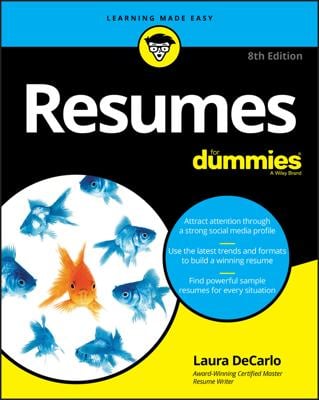Proper punctuation is important in cover letters. If you're often tripped up when using punctuation, review some punctuation fundamentals before writing your cover letters or other job search materials.
Following are some guidelines that address common punctuation slip-ups:
Semicolons: Semicolons are weak periods; they indicate a separation between two complete sentences that are closely related. You may choose instead to use periods between every sentence. You won’t break any rules, and you’ll avoid using semicolons incorrectly.
The only rule for semicolons is as follows: When you introduce a list of complete sentences by using a colon, separate each sentence with a semicolon. For example: I accomplished the following: I networked all the computers, company-wide; I designed a new system for scheduling; and I broke the world’s record in typing speed.
You can avoid this use of semicolons in your cover letter by placing each item on a separate line set off by bullets. No punctuation is necessary at the end of each line.
Punctuation in parenthetical expressions: If a parenthetical expression occurs in the middle or at the end of a sentence, place the punctuation outside the parentheses. For example: Cover letters are essential (see Chapter 5). Here's another example: Cover letters (and resumes), essential to the job search, are important.
Question marks and exclamation points, when part of a parenthetical expression occurring in the middle of a sentence, are the exception to this rule. For example: The interview (or was it an inquisition?) was a disaster. Here's another example: My cover letter (a masterpiece!) took four hours to write.
If a parenthetical expression stands alone as a sentence, place the punctuation inside the parentheses. For example: (I will discuss these skills in a moment.)
Hyphenating words for clarity: When you use two words together as a description of another word, use a hyphen. Examples include: next-to-last job and long-range plan.
To test whether you should use a hyphen, take out one of the descriptive terms and see if the description still makes sense. For example, without one descriptive term, next-to-last job becomes to last job.
Doesn’t make sense, does it? Because the three words “next to last” cannot be used individually as a description and still make sense, you need hyphens between them.
For greatest accuracy, check a dictionary, such as Dictionary.com.
Commas: In general, use commas anywhere you would pause if you read the sentence aloud. If you’re a person who pauses often while speaking, this suggestion probably won’t work for you. Ask several people to read your letter for punctuation and grammar and follow their suggestions. Or get a good punctuation guide and follow it.
Commas in a series: Whenever you have a series of terms separated by commas, use a comma after the next-to-last term for clarity. For example: Cover letters, resumes, and interviews make up part of the job search process.
This technique is called the serial comma. Newspapers don’t use serial commas because they slow down reading. Be consistent in your use of commas. Don’t use a serial comma in one paragraph and no serial comma in another that calls for one.

